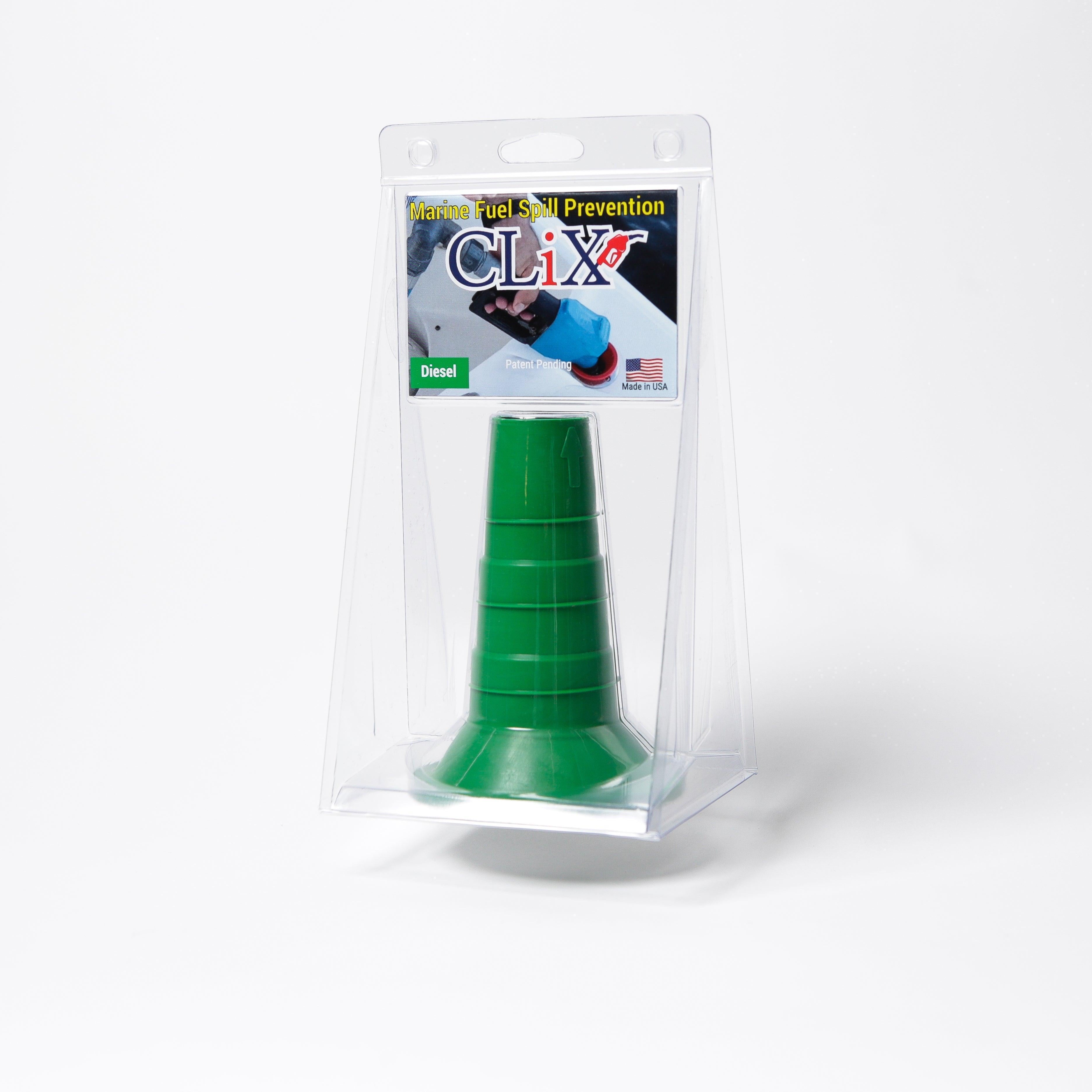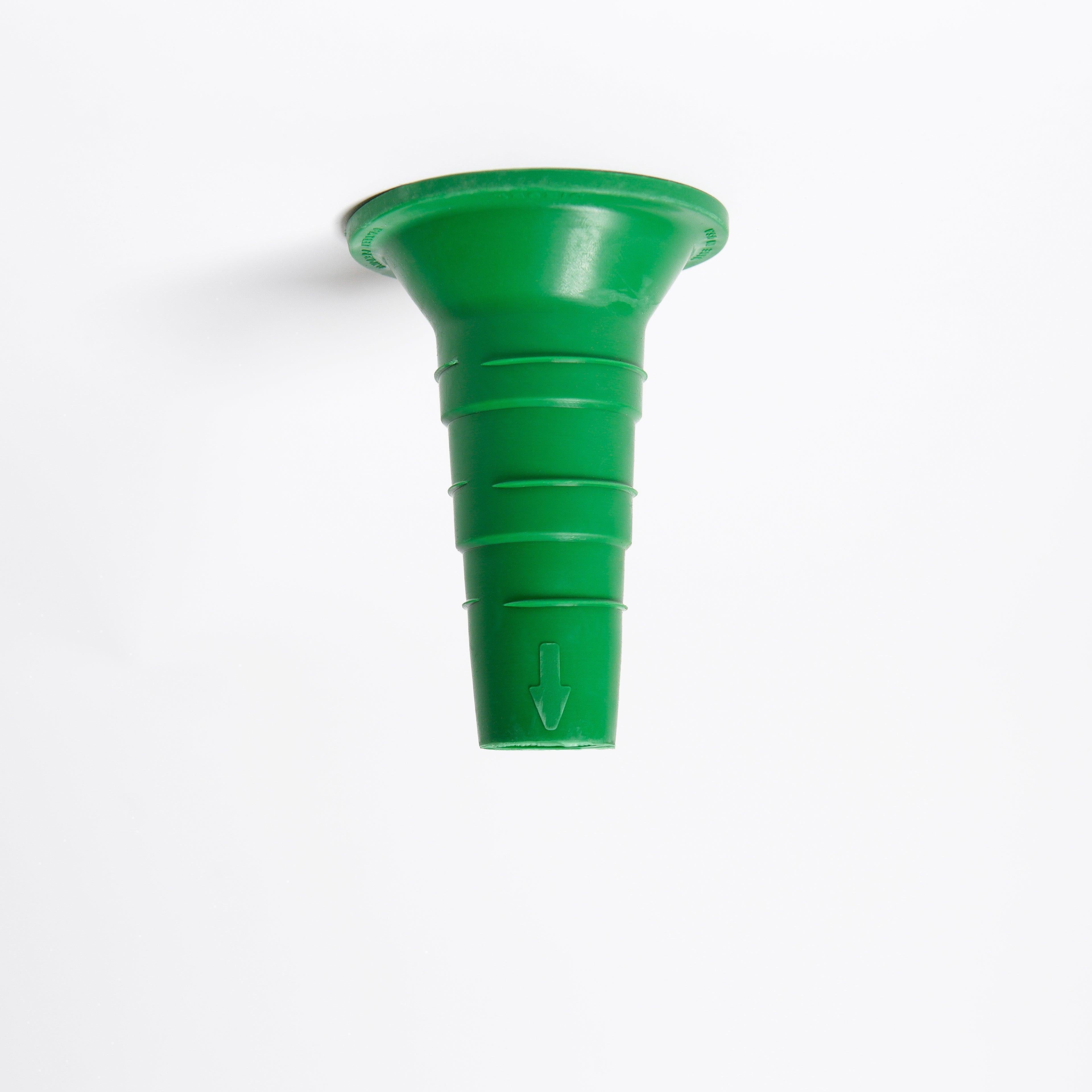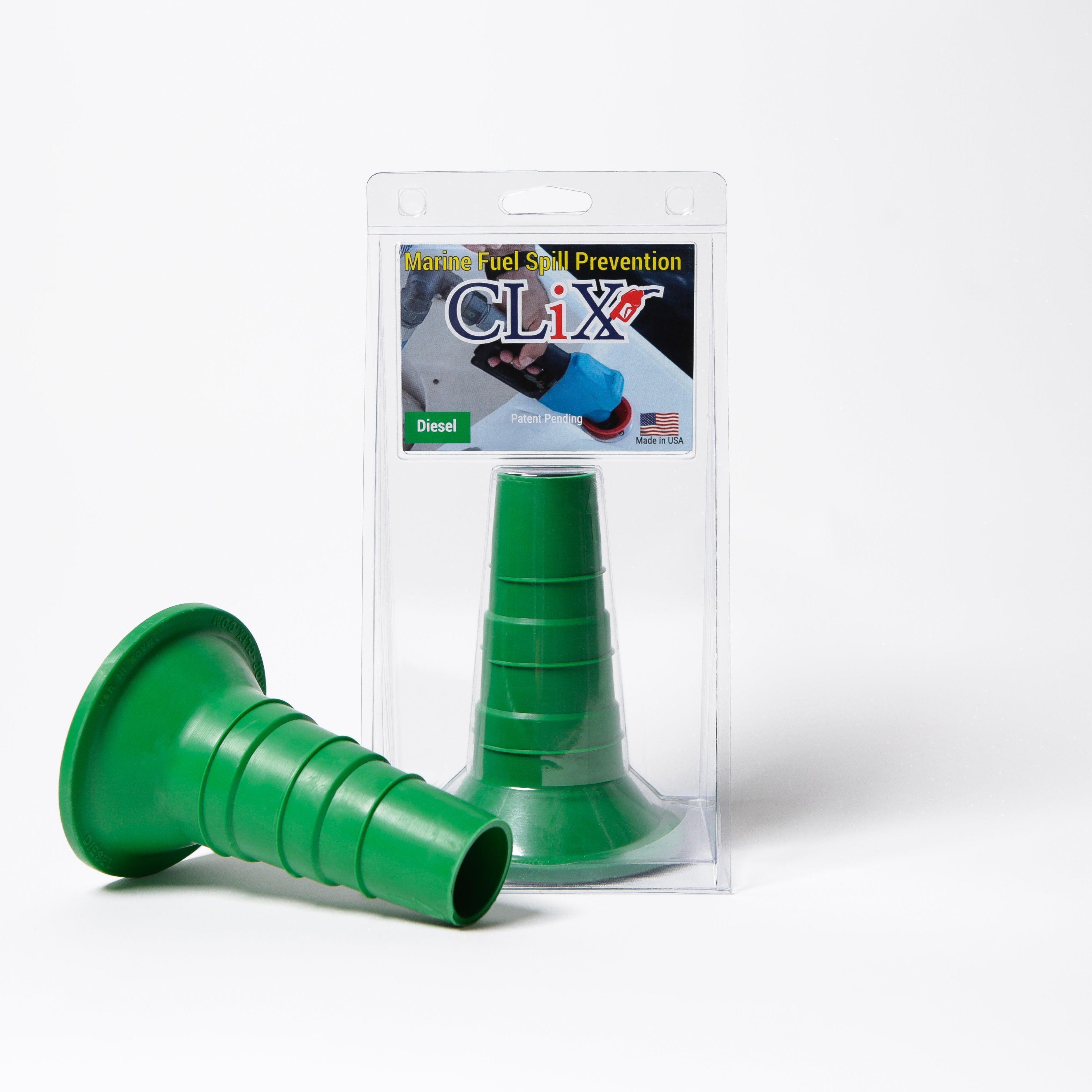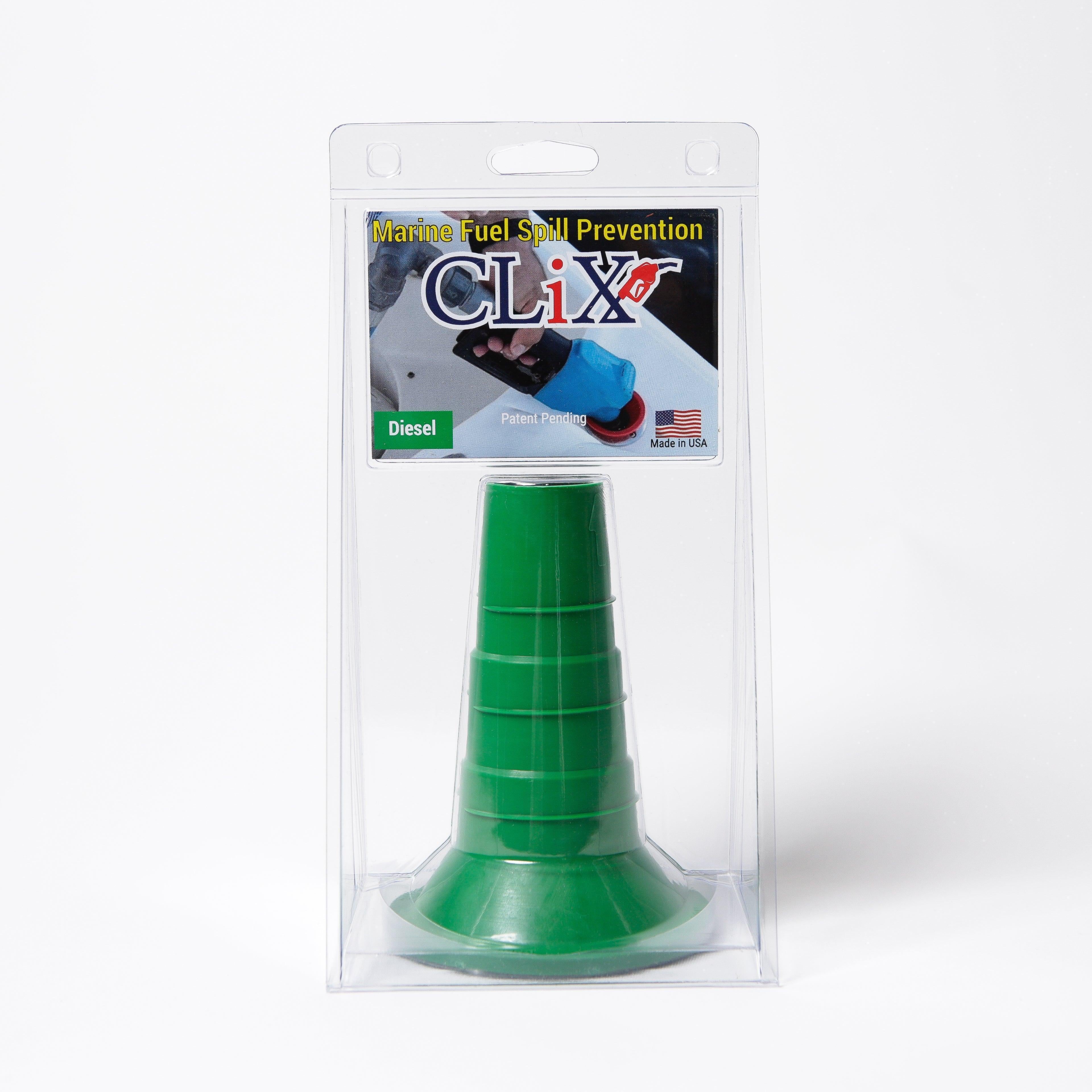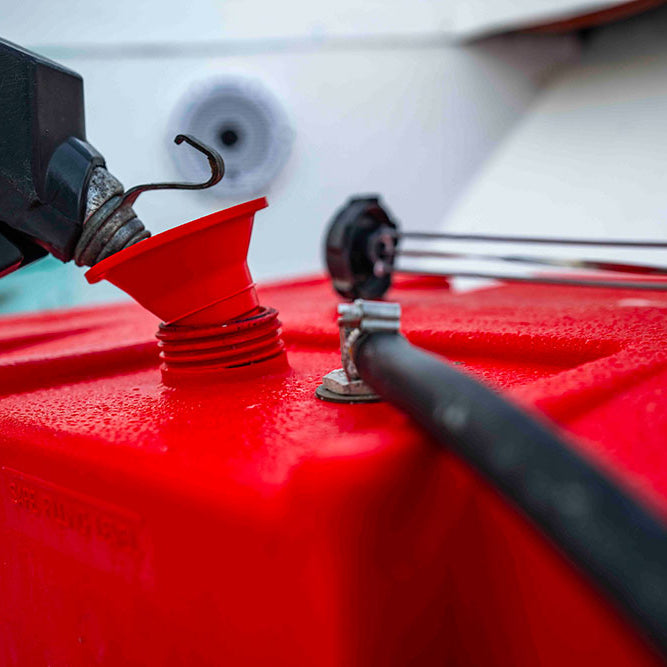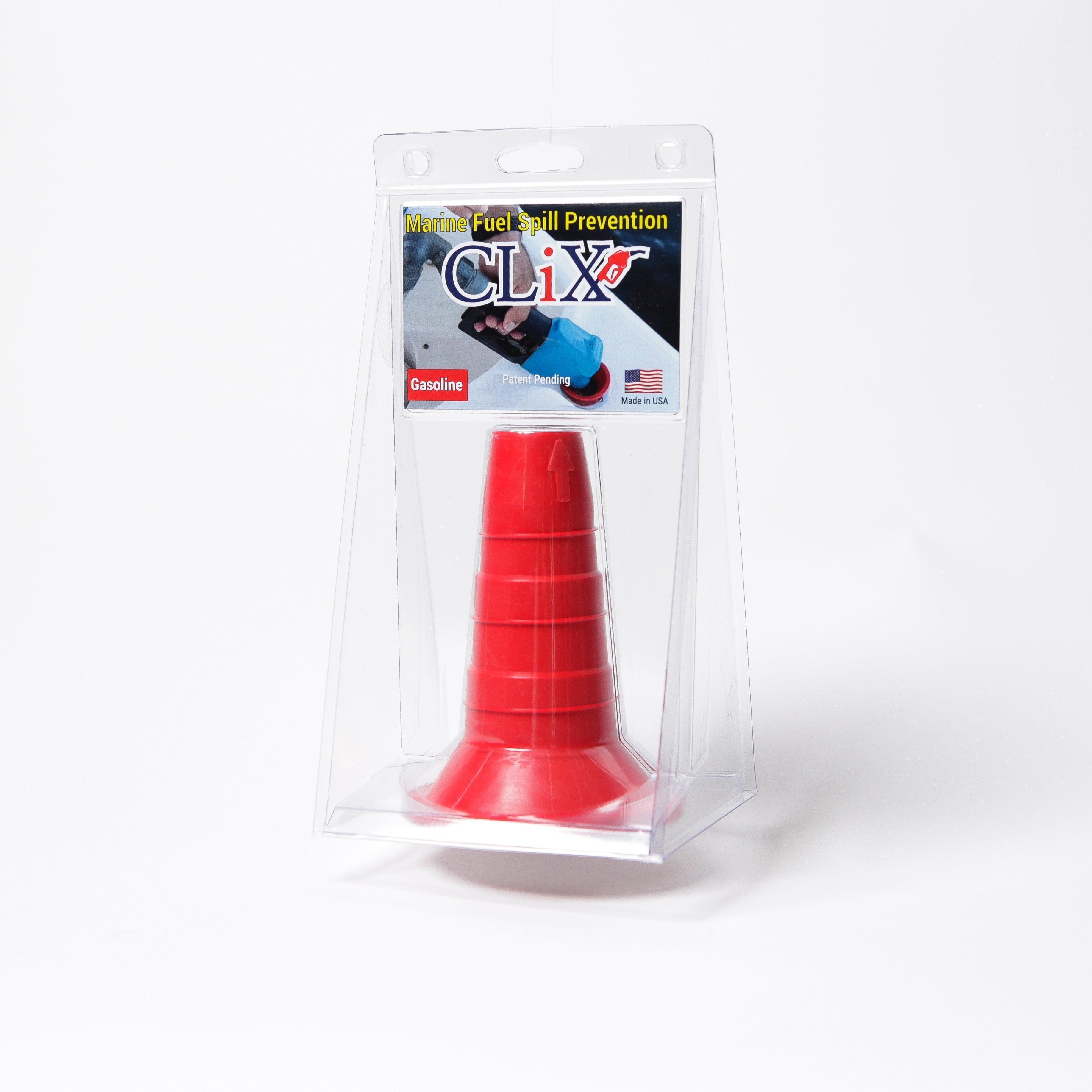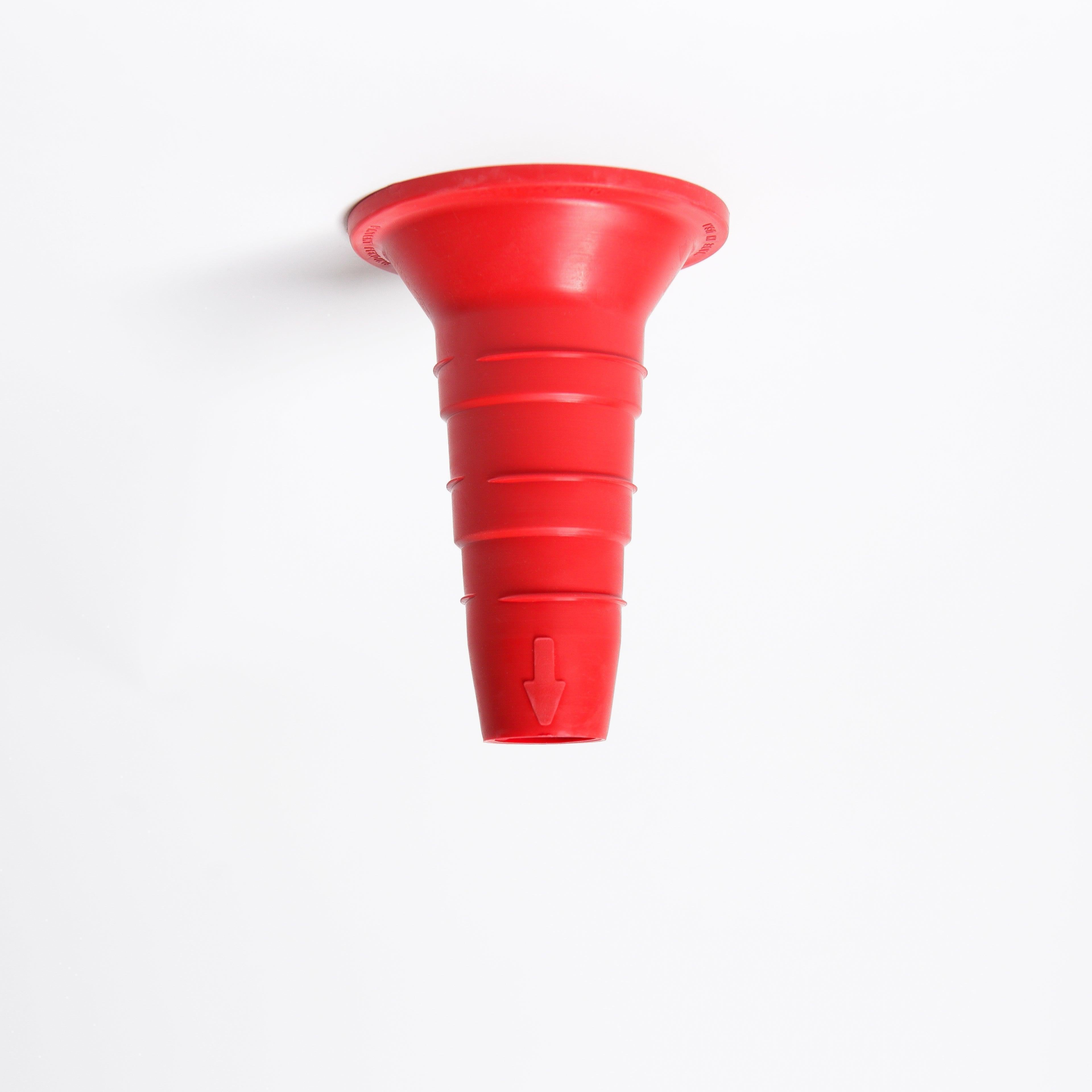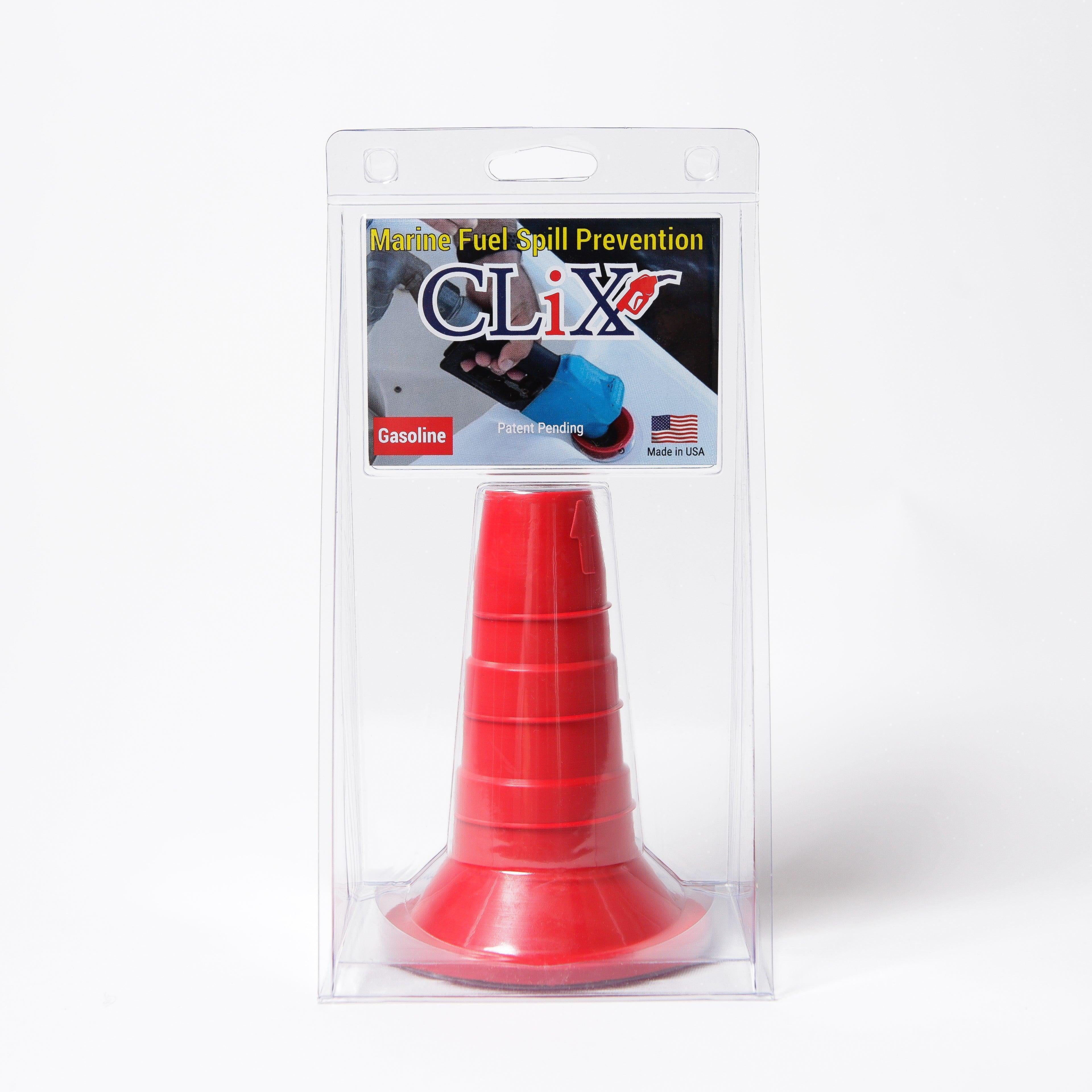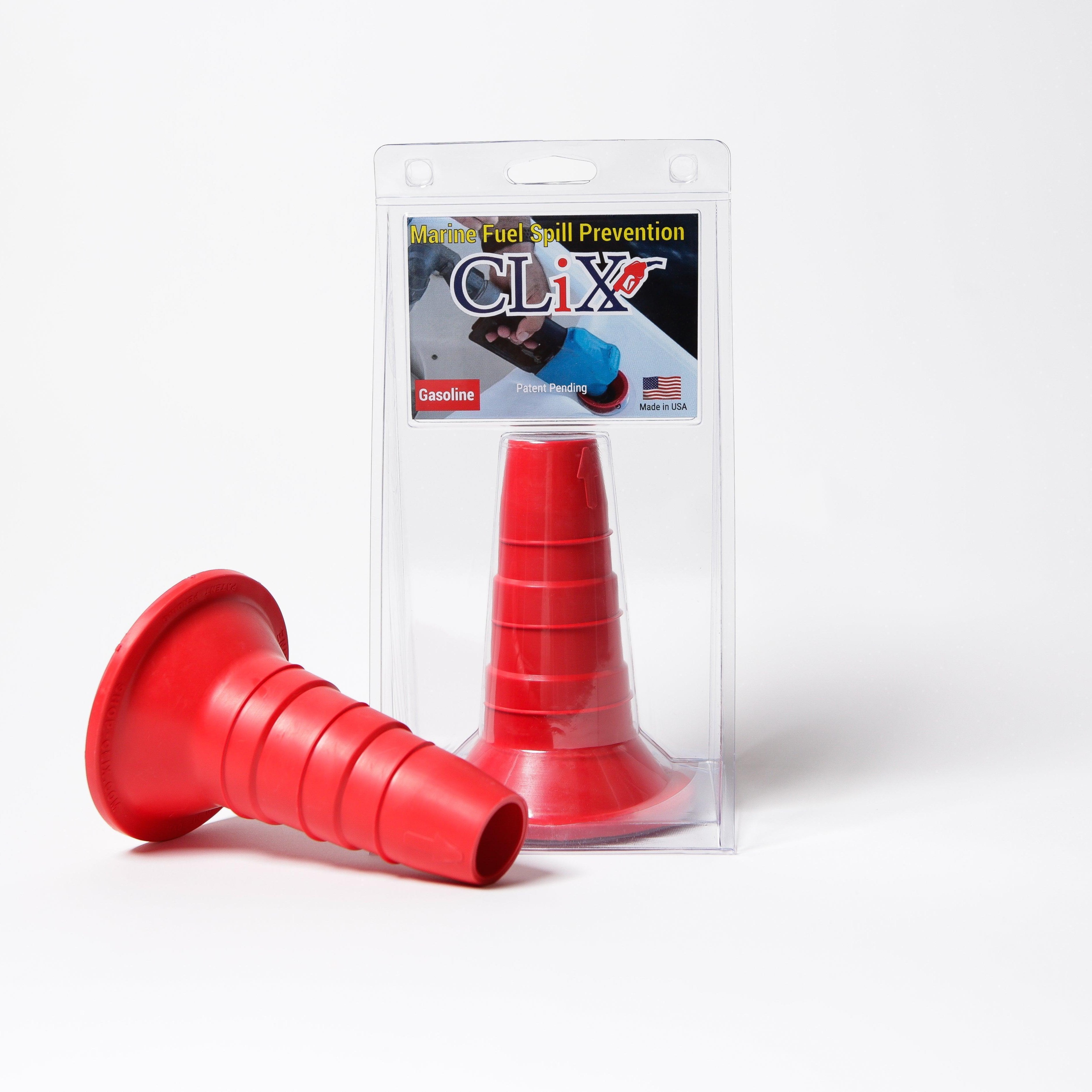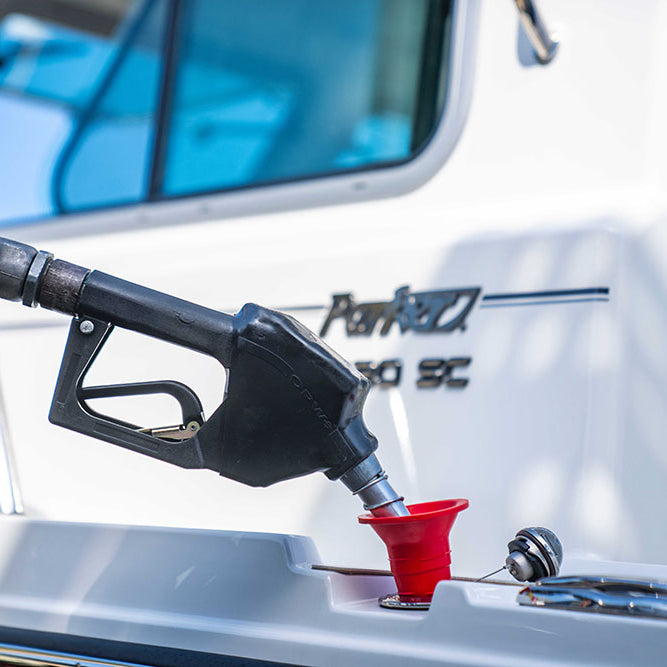The excitement of open water is undeniable, but true seamanship begins at the dock. A thorough pre-departure check isn't just a routine; it's the foundation of a safe, enjoyable, and stress-free day on the water. Skipping these crucial steps can lead to everything from minor inconveniences to serious, life-threatening emergencies far from shore. This comprehensive 7-point boat pre departure checklist is designed to be your definitive guide, transforming your preparation from a hurried task into a confident ritual.
Just as there are essential vehicle inspection checklist items for land transport, a comprehensive boat pre-departure checklist is vital for maritime safety. Following a systematic process ensures you don't overlook critical details. We'll cover everything from detailed weather analysis and mechanical checks to fuel management and safety gear, ensuring you're prepared for any eventuality.
By systematically reviewing each point, you not only enhance safety for everyone aboard but also protect your investment and ensure peace of mind. This guide will provide the actionable steps and specific insights needed to leave the dock with total confidence. Let's dive into the essential checks that separate a good day on the water from a great one.
1. Weather and Water Conditions Assessment
The single most important step in any boat pre departure checklist is a thorough evaluation of the weather and water conditions. This isn't just a quick glance at the sky; it's a comprehensive assessment of current and forecasted patterns that dictates the safety and feasibility of your entire trip. A proper assessment helps you determine if conditions are suitable for your vessel and your crew's experience level, preventing you from being caught in dangerous situations.
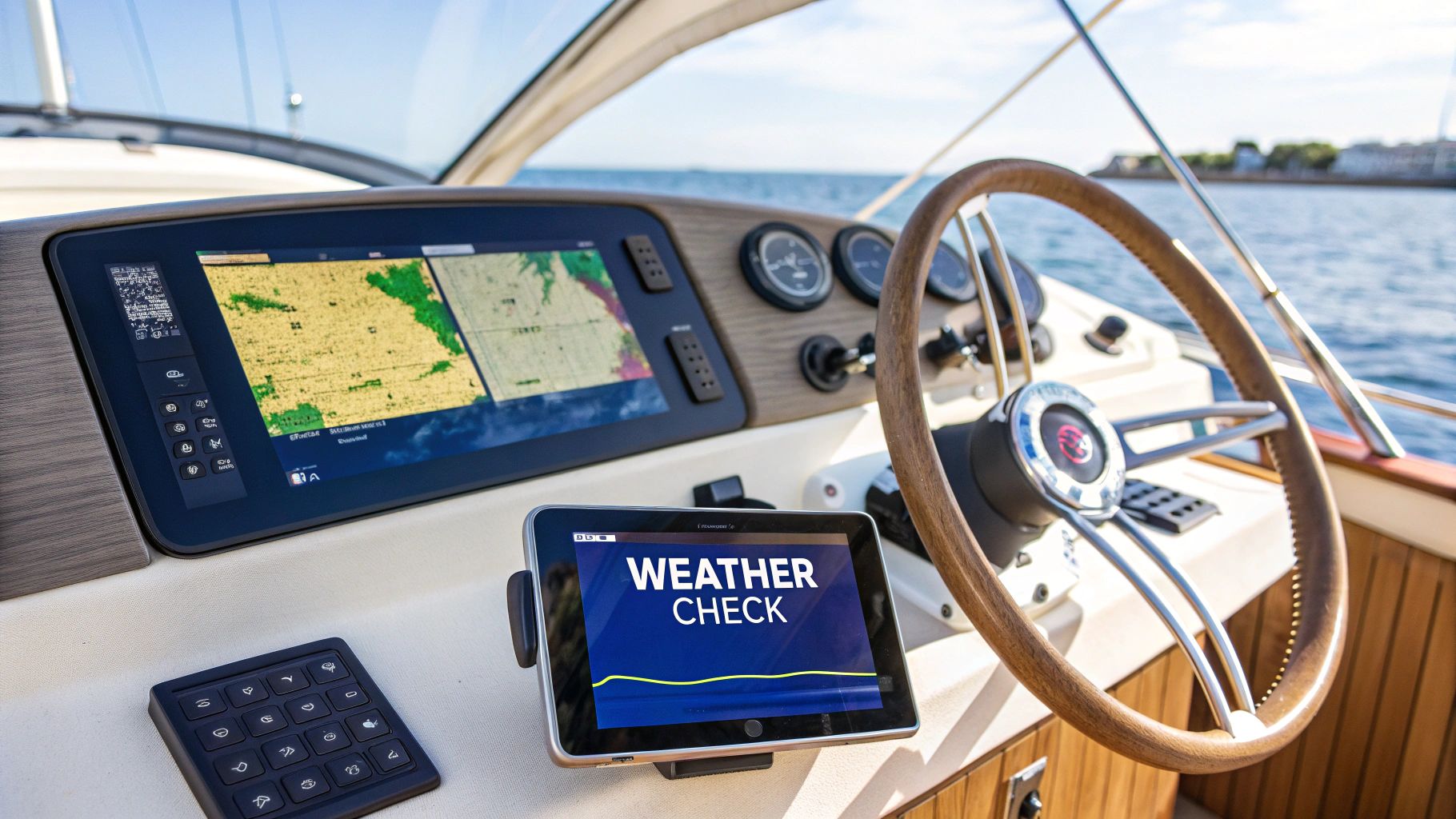
Neglecting this step can lead to scenarios ranging from uncomfortable rides to life-threatening emergencies. The Coast Guard often cites improper weather assessment as a contributing factor in boating accidents. This initial check informs every other decision, from your route and timing to the specific safety gear you might need.
How to Properly Assess Conditions
A complete assessment goes beyond just checking for rain. It involves a multi-layered approach to understanding the environment you're heading into.
- Check Multiple Sources: Don't rely on a single weather app. Cross-reference information from several reliable sources like the NOAA National Weather Service, specialized marine platforms like Windy.com or PredictWind, and local VHF weather channels. This provides a more complete picture and helps identify discrepancies.
- Analyze Key Metrics: Look specifically at wind speed and direction (including gusts), wave height and period (the time between waves), and visibility. A short wave period can make for a much rougher ride than a long one, even at the same height. Also, consider tide schedules and currents, as they significantly impact navigation and handling, especially in inlets and channels.
- Consider Your Vessel and Crew: Understand your boat's limitations. What is the maximum wind and wave height it can safely handle? Equally important, consider the experience and comfort level of everyone on board. Conditions that are manageable for a seasoned captain might be terrifying for novice passengers.
Key Insight: The "Five P's" rule, often taught in boating safety courses, is highly relevant here: Proper Planning Prevents Poor Performance. A few extra minutes analyzing the forecast on shore can save you hours of trouble on the water.
Your weather check isn't a one-time task. Continue to monitor conditions throughout your voyage, as forecasts can and do change. A responsible captain is always aware of the changing environment.
2. Safety Equipment and Life-Saving Appliances Check
Once you've confirmed the weather is safe, the next critical step in any boat pre departure checklist is a thorough inspection of your safety equipment and life-saving appliances. This isn't just about having the gear on board; it's about ensuring every piece is present, functional, and easily accessible in an emergency. A proper safety check guarantees that you and your passengers have the tools needed to handle unexpected situations, from a fire to a person overboard.
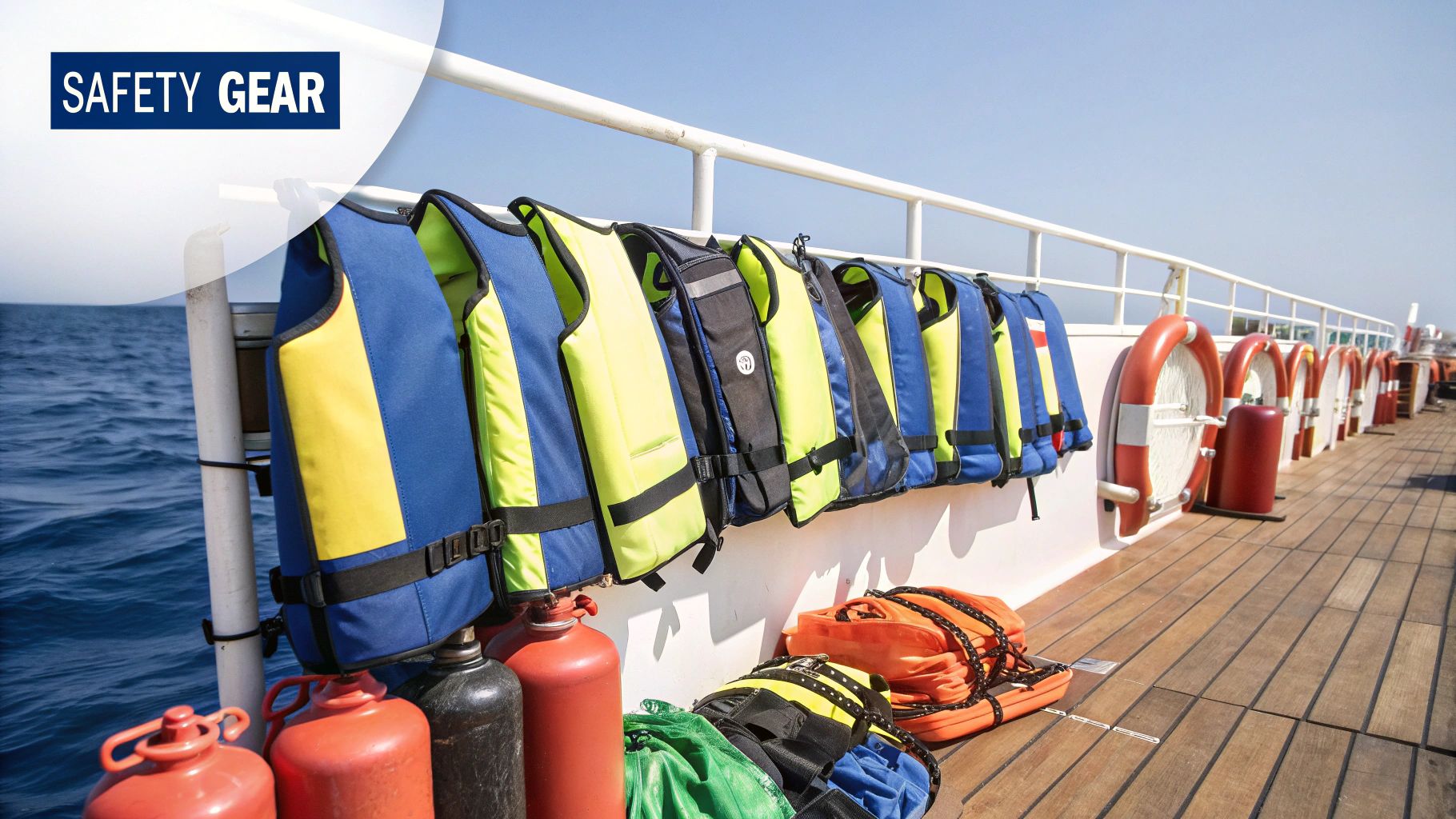
Failing to verify your safety gear can have catastrophic consequences. The US Coast Guard and BoatUS Foundation stress that having accessible, working equipment is a cornerstone of responsible boating. This check transforms safety gear from mere legal requirements into a reliable, life-saving system ready for immediate deployment when seconds count.
How to Properly Inspect Safety Gear
A complete safety check involves more than a quick glance. It requires a hands-on, systematic review of all essential items before you cast off lines.
- Inventory Required Equipment: Start by verifying all Coast Guard-required items are on board. This includes a sufficient number of properly sized Personal Flotation Devices (PFDs) for every person, a throwable flotation device (Type IV), current visual distress signals (flares or electronic signals), a sound-producing device (horn or whistle), and accessible fire extinguishers.
- Test and Inspect: Don't just count the items; inspect their condition. Check that fire extinguishers are fully charged and not expired. Test air horns and whistles. Ensure flares are within their expiration date and stored in a dry, accessible location. For a more detailed guide, you can learn more about the essential boating safety equipment every vessel should have.
- Conduct a Crew Briefing: Ensure every person on board knows the location of all safety equipment, especially PFDs and fire extinguishers. Explain how to use them properly. Beyond the vessel itself, ensuring the safety of all crew and passengers often includes personal safety measures. This involves understanding and performing comprehensive safety protocols like the buddy check before any in-water activity.
Key Insight: Create a laminated checklist specific to your boat. Keep it with your other pre departure documents. This simple tool helps you methodically verify every piece of safety gear without relying on memory, ensuring nothing is overlooked.
Regularly reviewing your safety equipment builds a culture of preparedness. It’s a habit that protects your most valuable assets: your crew and passengers.
3. Engine and Mechanical Systems Inspection
Beyond the environment, the heart of your vessel requires a meticulous check. A thorough inspection of the engine and mechanical systems is a non-negotiable part of any boat pre departure checklist. This preventive approach moves beyond hoping for the best and actively seeks to identify potential problems on the dock, where they are far easier and safer to fix than miles from shore.
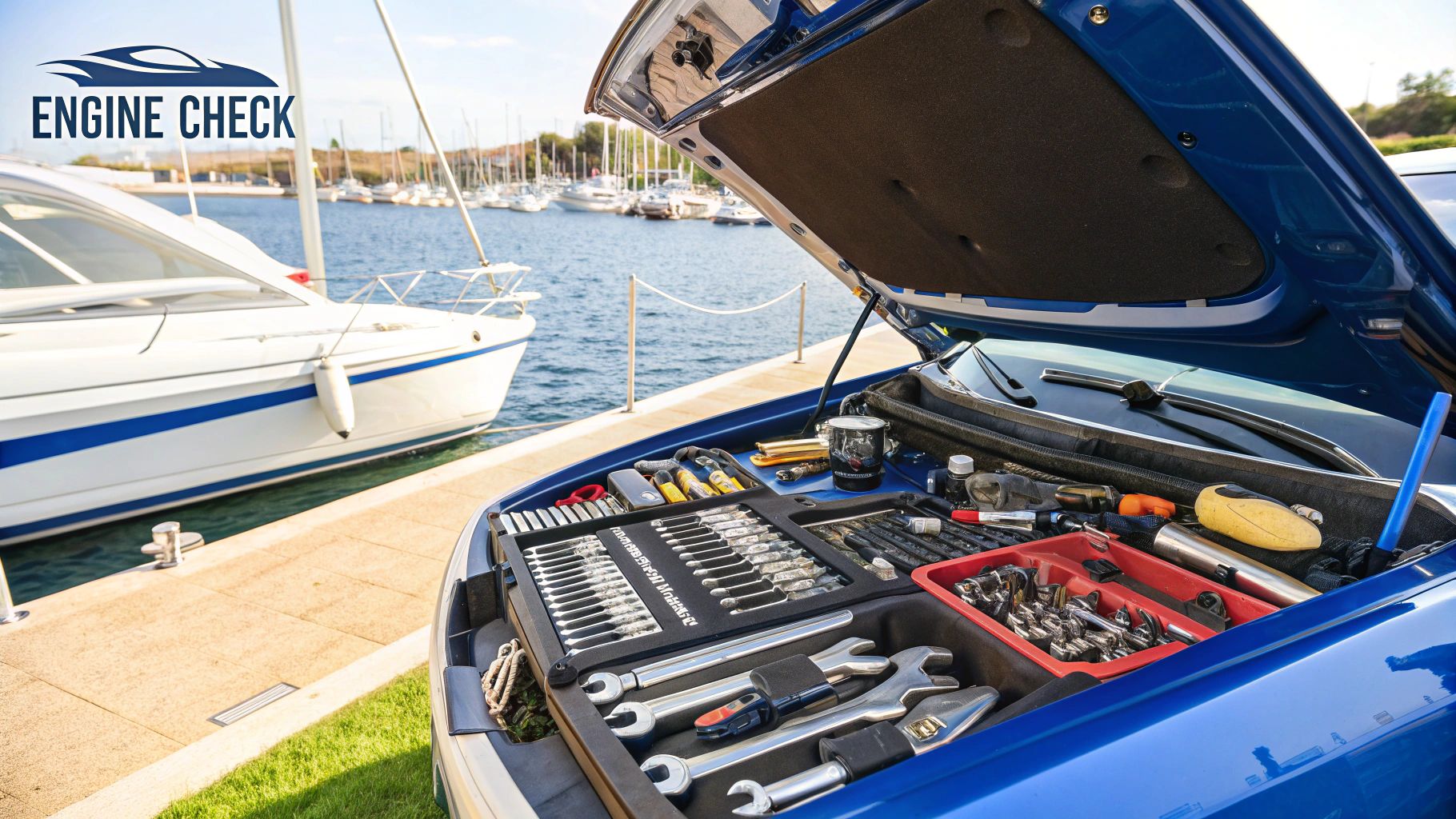
The logic behind this step is proven daily by professionals. Commercial fishing fleets, charter operators, and naval vessels all conduct rigorous pre-underway inspections because they know mechanical failure at sea can be catastrophic. For the recreational boater, this professional discipline is just as critical for ensuring a safe and enjoyable trip.
How to Properly Inspect Mechanical Systems
A systematic inspection ensures no critical component is overlooked. This check should become a consistent, well-practiced routine before every single departure.
- Check Fluid Levels: Visually inspect the engine oil, coolant, and transmission fluid levels. Ensure they are within the manufacturer's recommended operating range. Low fluid levels can be an early indicator of a leak or excessive consumption, warranting further investigation.
- Inspect the Fuel System: Look for any signs of fuel leaks in the lines, connections, and filters. Check the fuel-water separator and drain any accumulated water. This simple step prevents water from reaching the engine, a common cause of engine failure.
- Test Steering and Controls: Turn the wheel lock-to-lock and ensure the rudder or outdrive moves smoothly and without obstruction. Operate the throttle and shift controls to confirm they are functioning correctly before starting the engine.
- Visually Scan the Engine Bay: Look for anything out of the ordinary, such as loose belts, frayed wires, or corrosion on electrical connections. Check that sea strainers are clear of debris to ensure proper raw water flow for cooling.
Key Insight: Keep a dedicated logbook for your vessel. Documenting every check, fluid top-off, and maintenance task creates a valuable history. This record helps you spot developing trends and provides crucial information for mechanics, following standards set by organizations like the American Boat and Yacht Council (ABYC).
Learning the normal sounds and vibrations of your engine is also vital. Any new or unusual noise should be investigated immediately, as it is often the first sign of a developing mechanical issue.
4. Navigation Equipment and Chart Verification
Knowing your destination is one thing; having the tools to get there safely is another. Verifying your navigation equipment is a critical part of any boat pre departure checklist, ensuring you can plot your course and track your position accurately. This step involves more than just turning on your GPS; it’s about confirming the reliability of your primary systems and the readiness of your backups.
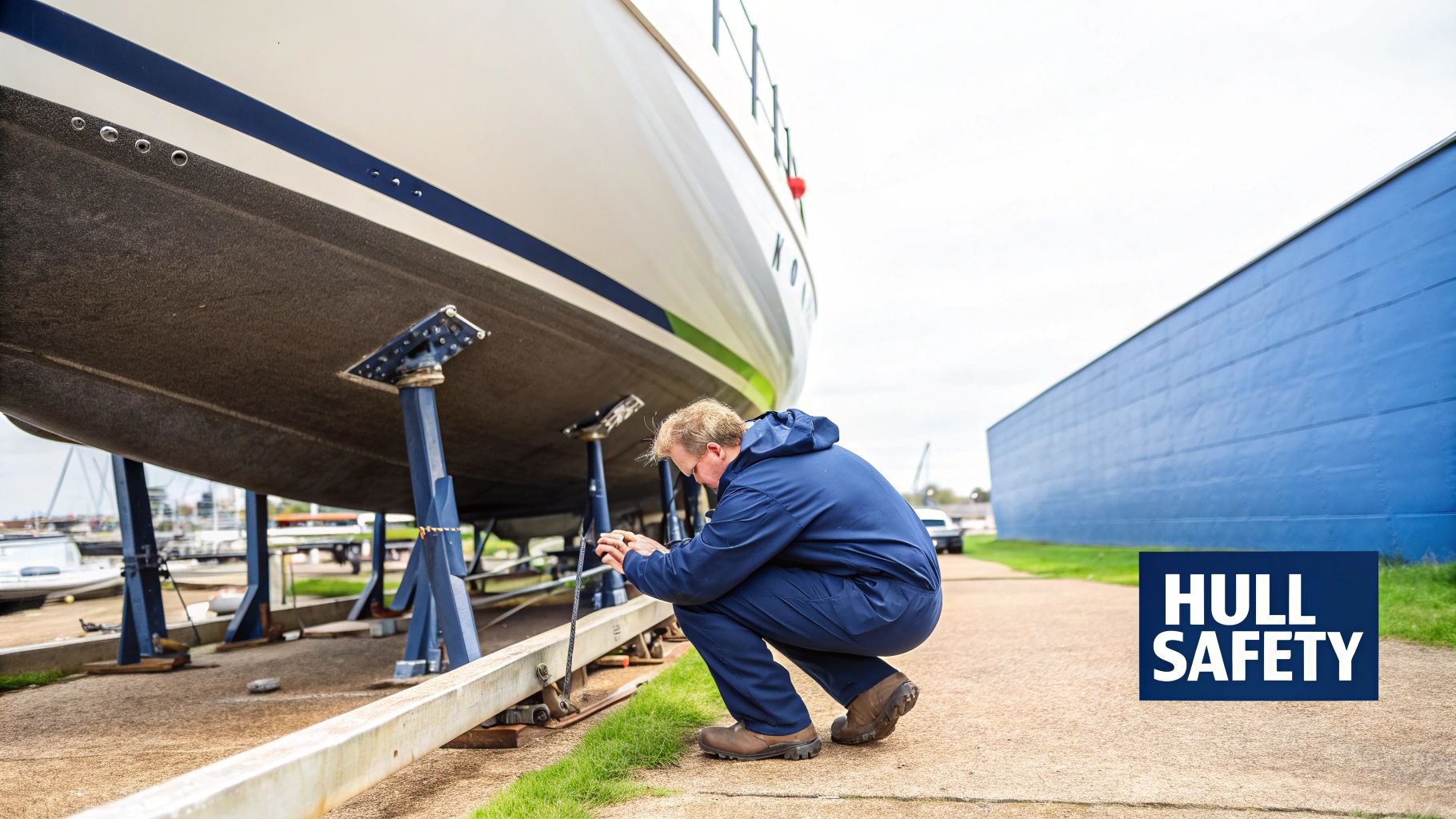
Faulty navigation equipment can quickly turn a pleasant trip into a disorienting and dangerous situation, especially if visibility drops or you are in unfamiliar waters. The U.S. Coast Guard mandates that commercial vessels carry updated paper charts as a fail-safe, a practice all recreational boaters should adopt. This redundancy is your lifeline when technology fails.
How to Properly Verify Navigation Systems
A comprehensive check ensures all your navigational tools are operational and accurate before you cast off. This builds confidence and competence for a safe journey.
- Confirm Electronic Systems: Power up your GPS chartplotter, radar, and any other electronic navigation aids. Ensure they acquire a satellite signal quickly and your position appears accurate. Take a moment to verify that your electronic charts are the most current versions available, as channels and markers can change.
- Inspect Backup Methods: Your primary backup is often a magnetic compass. Check that it is properly calibrated, free from deviation caused by nearby electronics, and its fluid is clear. Have up-to-date paper charts for your intended area on board. For a deeper understanding of essential equipment, you can review this comprehensive boat lights and navigation guide.
- Practice with All Tools: Don't wait for an emergency to learn how to use your backup compass and paper charts. Before leaving the dock, take a few minutes to plot a simple course or take a bearing to a known landmark. This practice ensures you are prepared to navigate manually if your electronics go down.
Key Insight: Technology is a powerful ally, but it should never be your only option. The mantra "two is one, and one is none" is especially true for navigation. Always have a reliable, non-electronic backup method ready and know how to use it.
Your navigation check isn’t just about the equipment itself. It's about building the skills and procedures to stay on course no matter what challenges you encounter on the water.
5. Hull and Deck Safety Inspection
While a captain’s eyes are often on the horizon, one of the most critical parts of any boat pre departure checklist involves looking down at the vessel itself. A thorough hull and deck safety inspection is a physical examination of your boat's structural integrity. This hands-on check ensures the hull is sound, deck hardware is secure, and no potential hazards exist that could compromise safety once you're underway.
Neglecting this physical walk-around can lead to catastrophic failures. A loose cleat could fail under load, a hidden crack below the waterline could lead to slow flooding, or a loose stanchion could result in a person falling overboard. This inspection is your last chance to catch structural issues before subjecting the vessel to the stresses of open water.
How to Properly Inspect Your Hull and Deck
A systematic inspection ensures nothing is missed. It’s a process championed by organizations like the American Boat and Yacht Council (ABYC) and is a core component of professional marine surveys.
- Walk the Perimeter: Start at the bow and work your way around the entire boat. Look for any visible damage to the hull, such as cracks, deep gouges, or blisters. Pay close attention to the waterline, through-hull fittings, and transducers to ensure they are sealed and secure.
- Test Deck Hardware: Physically check every piece of hardware. Wiggle stanchions and railings to ensure they are firmly mounted. Inspect cleats, chocks, and windlasses for signs of corrosion or looseness. Make sure hatches and portlights seal properly to prevent water intrusion.
- Check for Deck Hazards: Clear the decks of any potential tripping hazards like loose lines, misplaced gear, or unsecured items. Ensure non-skid surfaces are clean and effective, especially in high-traffic areas. A clean and organized deck is a safe deck.
Key Insight: Treat small problems like big ones. A minor stress crack or a slightly loose bolt may seem insignificant at the dock, but the dynamic forces of waves and motion can quickly turn a small issue into a major structural failure. Document and address problems immediately.
This routine inspection fosters a deeper understanding of your vessel's condition. It transforms you from a simple operator into a proactive and responsible captain who knows their boat inside and out.
6. Fuel and Fluids Management
Effective fuel and fluids management is a cornerstone of a comprehensive boat pre departure checklist, going far beyond simply ensuring the tank is full. It involves a systematic check of all onboard liquids, including fuel quantity and quality, engine oil, coolant, hydraulic fluid, fresh water, and waste systems. Proper management prevents engine failure, system breakdowns, and ensures the comfort and safety of everyone on board for the entire planned voyage.
Running out of fuel is one of the most common, and preventable, reasons boaters call for assistance. Beyond fuel, low engine oil can cause catastrophic failure, and an empty freshwater tank can quickly turn a pleasant trip into a major inconvenience. This check is critical for preventing operational issues that could leave you stranded.
How to Properly Manage Fluids
A thorough fluids check is a hands-on process that requires diligence. It ensures your vessel's lifeblood systems are ready for the journey ahead.
- Calculate Fuel Needs Accurately: Adhere to the "rule of thirds" for fuel planning: one-third of your fuel for the trip out, one-third for the return, and one-third held in reserve for emergencies like unexpected weather or currents. This 30% safety margin is non-negotiable.
- Inspect Fuel and Oil Quality: Don't just check the quantity; inspect the quality. Use a water-detecting paste on a dipstick or drain a small sample from your fuel-water separator to check for water or sediment. Look at the engine oil to ensure it isn't milky, which indicates water intrusion. For more details on this, you can explore our boat fuel tank guide on clixfueling.com.
- Check All Fluid Levels: Systematically check every fluid reservoir. This includes engine coolant, power steering or hydraulic fluid, and transmission fluid. Also, confirm you have sufficient fresh water for your trip's duration and that your holding tank has adequate capacity.
Key Insight: Treat your fluid check like a pilot's pre-flight inspection. Every single fluid system is critical to a safe and successful trip. A simple checklist can help ensure nothing is overlooked, from the main fuel tank down to the trim tab fluid.
Remember to also check for any visible leaks in hoses or around engine components. A small drip at the dock can become a major problem under pressure out on the water.
7. Communication Systems and Emergency Protocols
Reliable communication is your lifeline on the water, making a thorough systems check a non-negotiable part of any boat pre departure checklist. It’s not enough to simply have the equipment onboard; you must ensure it works and that you have clear protocols for using it in an emergency. This check confirms you can call for help, receive critical information, and stay connected when it matters most.
Neglecting your communication gear can leave you isolated and helpless in a crisis. From a simple mechanical failure to a serious medical situation, the ability to clearly transmit your position and needs can be the difference between a minor inconvenience and a tragedy. This step ensures that your primary and backup lines of communication are open and functional before you ever leave the sight of land.
How to Properly Check Communications
A comprehensive communications check involves testing hardware and confirming your emergency plans are understood by everyone involved, both on and off the boat.
- Test All Equipment: Don’t just turn your VHF radio on; perform a radio check. Use a non-emergency channel like 9 or hail another vessel to confirm you can both transmit and receive clearly. If you rely on a cell phone, check the battery level and signal strength, and understand where you are likely to lose service. For offshore trips, test your satellite phone or personal locator beacon (PLB) according to the manufacturer’s instructions.
- Establish Clear Protocols: Before departure, brief your crew on how to use the VHF radio, including how to make a Mayday call. Ensure everyone knows where emergency contacts and important numbers are stored. This includes programming key channels like VHF Channel 16 (the international distress frequency) and the local Coast Guard station into your devices.
- File a Float Plan: This is one of the most crucial yet overlooked steps. A float plan details your vessel, crew, destination, and expected return time. Leave it with a responsible person ashore who knows to contact authorities if you don't return as scheduled. Services like the BoatUS Float Plan offer excellent digital templates.
Key Insight: Redundancy is your best friend. Never rely on a single communication method. A VHF radio is essential for boat-to-boat and boat-to-shore communication, but a charged cell phone in a waterproof case serves as an excellent backup within coastal areas. For offshore journeys, a satellite device is a critical third layer.
Boat Pre-Departure Checklist Comparison
| Item | Implementation Complexity 🔄 | Resource Requirements ⚡ | Expected Outcomes 📊 | Ideal Use Cases 💡 | Key Advantages ⭐ |
|---|---|---|---|---|---|
| Weather and Water Conditions Assessment | Medium – requires multiple data sources and interpretation | Moderate – access to weather services/apps | Improved safety by anticipating weather, better route planning | Pre-departure planning, racing, fishing, commercial voyages | Prevents dangerous situations, route adjustments, safety prep |
| Safety Equipment and Life-Saving Appliances Check | Low to Medium – routine inspections and testing | Moderate to High – maintenance and replacement costs | Compliance with regulations, readiness in emergencies | All vessels needing safety compliance and peace of mind | Ensures life-saving readiness, reduces liability |
| Engine and Mechanical Systems Inspection | High – needs mechanical knowledge and tools | High – tools, spare parts, time investment | Prevents breakdowns, extends engine life | Commercial charters, fishing boats, naval vessels | Avoids costly failures, maintains performance and warranty |
| Navigation Equipment and Chart Verification | Medium – equipment checks and chart updates | Moderate – electronic updates and backups | Accurate navigation, reduced errors, redundancy | Sailing, commercial, search and rescue, racing | Prevents navigation errors, precise route monitoring |
| Hull and Deck Safety Inspection | Medium to High – physical inspections, some expertise | Moderate – repair costs and access tools | Detects structure issues, prevents water intrusion | Insurance surveys, maintenance programs, general boating | Maintains vessel integrity and safety on deck |
| Fuel and Fluids Management | Medium – involves calculations and testing | Moderate to High – fuel quality tests and additives | Avoids running out or contamination, maintains system reliability | Long-range cruising, commercial operators, military vessels | Prevents engine damage, ensures sufficient supplies |
| Communication Systems and Emergency Protocols | Medium – equipment tests and protocol setup | Moderate – communication devices and subscriptions | Enables emergency contact, coordination, and weather info | Offshore, commercial, racing, fishing vessels | Facilitates rescue, real-time updates, essential communication |
Your Final Check: Integrating Smart Fueling for a Perfect Departure
The open water promises adventure, relaxation, and escape, but a truly successful voyage begins long before you cast off the lines. It starts with a disciplined, methodical approach to preparation. By transforming this comprehensive boat pre departure checklist from a mere suggestion into an unbreakable habit, you are not just ticking off boxes; you are actively building a foundation of safety, confidence, and responsibility that will define every journey you take.
Mastering this routine means you can leave the dock with the assurance that you are prepared for whatever the day holds. From verifying your safety gear and inspecting engine systems to confirming your navigation equipment is functioning flawlessly, each step is a critical layer of protection for you, your passengers, and your vessel. This isn't about dampening the excitement of boating; it's about amplifying it. The peace of mind that comes from knowing you’ve done your due diligence is what allows for pure, unadulterated enjoyment once you're underway.
From Checklist to Confidence
Think of your pre-departure routine not as a chore, but as the first and most important part of your trip. The real value of this checklist emerges when it becomes second nature.
- Systematic Safety: A consistent check ensures no critical item is ever overlooked, from the number of life jackets to the charge on your VHF radio.
- Mechanical Reliability: Regular inspections of your engine, fluids, and steering systems help you catch minor issues before they escalate into major, trip-ending problems far from shore.
- Environmental Stewardship: A thorough check, especially concerning fuel and waste systems, demonstrates respect for the marine ecosystems we all cherish.
The final piece of this puzzle often involves the most risk and anxiety: fueling. This is where modern innovation can seamlessly integrate into your tried-and-true process, elevating your entire pre-departure routine. Solutions like the CLiX automatic shut-off system transform a potentially messy and hazardous task into a clean, efficient, and worry-free final step.
By embracing both foundational checks and modern technology, you embody the qualities of a truly prepared and modern mariner. You’re not just a boat owner; you are a captain who prioritizes safety, efficiency, and environmental care. This diligent approach is your ticket to a perfect departure, every single time, setting the stage for unforgettable memories on the water.
Ready to make your fueling process the easiest part of your boat pre departure checklist? Discover how the innovative automatic shut-off technology from CLiX Fueling Solutions can eliminate spills, prevent overfills, and give you complete peace of mind at the pump. Visit CLiX Fueling Solutions to upgrade your vessel and perfect your departure routine.

